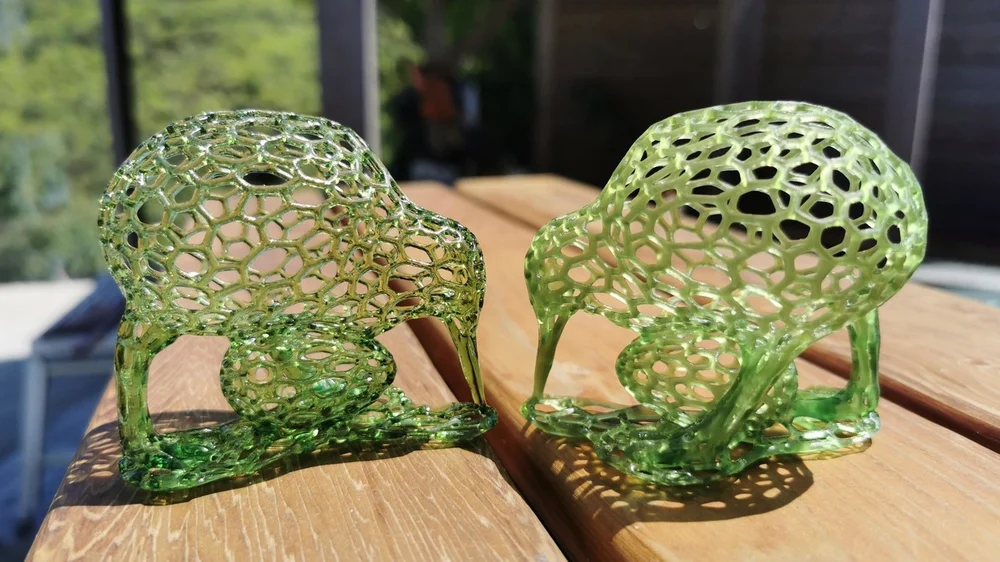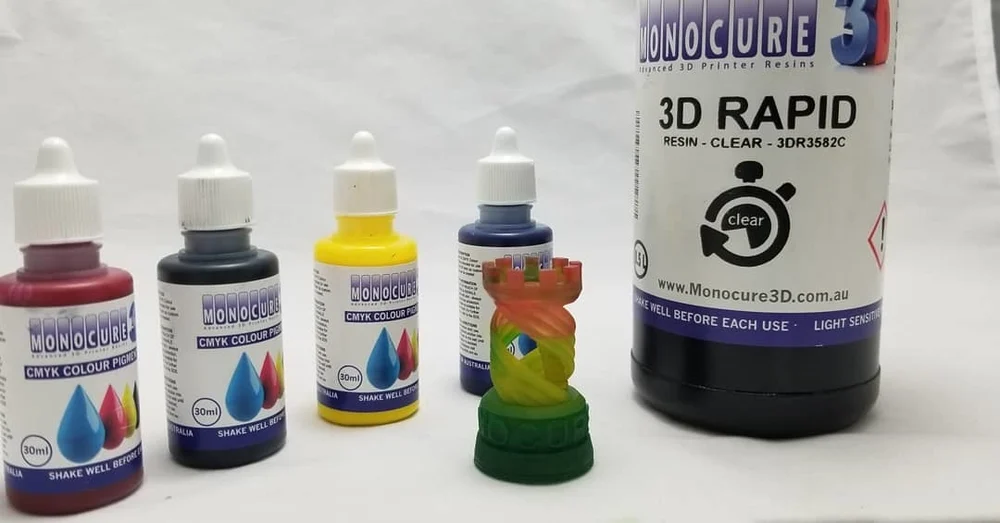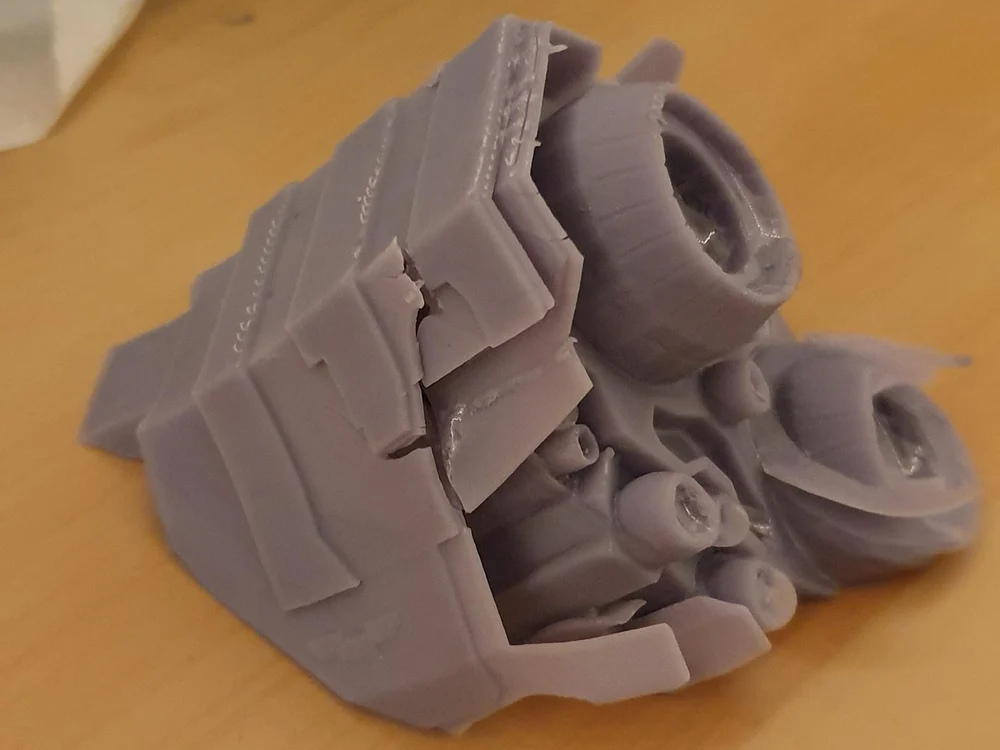Food dyes are used all the time in baking to give a splash of color. But can you use food coloring in resin? Read on to find out!
All About Resin

Resin is made up of combinations of oligomers and monomers that are photosensitive. In the context of additive manufacturing, this photosensitivity is used in vat polymerization, where the specifically-designed resin is cured (hardened) by exposure to UV light. In the case of stereolithography (SLA), the light source is a high-powered laser, while in newer methods like digital light processing (DLP), a projector screen is used.
To some extent, these processes are comparable with fused deposition modeling (FDM) 3D printing, as a part is still created layer by layer. However, with resin 3D printing, the build plate is slowly raised away from the vat of resin as each layer is cured, rather than layers being extruded on top of each other.
Resin can be purchased in a variety of colors, but as with anything, makers have begun to experiment with other methods of coloring, including using dyes intended for food. But don’t be fooled: Even if you can add food coloring to it, resin is still toxic! When handling or printing with resin, we recommend wearing safety goggles and nitrile gloves, and always work in a well-ventilated area.
How to Dye

3D printing resin is usually already dyed by the manufacturer in its own range of colors. If you wish to customize your own, the process is similar to that of dyeing resins for other purposes – basically, you mix in the dye! It’s recommended to use a clear resin when aiming for a transparent finish, and white resin for an opaque result.
To change the color of the resin, prior to printing, you add drops of dye or pigment to the resin to achieve the desired color. It’s important to do this in a cup or another plastic container, so you can ensure it’s properly mixed before pouring it into the printer’s vat.
As pictured above, it’s possible to change colors in a single print. A gradual color change is achievable by periodically adding more or different dye to the resin vat, though the inability to mix in the color can lead to patchy or streaky results. Alternatively, you can change colors mid-print by pausing the print and replacing the resin in the vat with a new color.
For best results, a color chart and sub-milligram scales are recommended. Keep thorough records of what you’ve done for repeatable and accurate colors.
Note that, depending on the machine and type of dye you add, there’s a possibility that you could be voiding your manufacturer’s warranty. Be sure to double-check before trying anything out of the ordinary!
Playing with Food Coloring

First thing’s first, for best results you should be using a powdered pigment or a liquid dye designed for UV resin. 3DJake, for example, offers resin dyes in a variety of colors so you can create any color you like, though it’s important to note that their base color mix is intended for use with DLP or LCD printers.
Otherwise, it’s possible to use food coloring that’s either powdered or oil-based, as these will work essentially the same as those designed for UV resin. Examples include pigments used to give color to chocolate or candy. The reason these specific food dyes are oil-based is to retain proper consistency and mix well with the confectionary.
The issue with most supermarket-bought food coloring is that it’s water-based, and resin is not. Keeping your base materials the same is important, as one of the issues with using water-based dyes is that they may not mix well. This could lead to streaky color at a minimum, or even failed prints!
An additional problem with using water or solvent-based dyes is what might happen in the future. As explained by Monocure3D Pro Tips on YouTube, these types of dyes can evaporate over time and crack the resin, ruining the print.
Best Practice & Tips

Follow the following to get the most out of your dyed prints and avoid common mistakes:
- Be sure to follow proper safety precautions when working with resin. It isn’t as user-friendly as filament, so you do need to be careful.
- Be sure to use dyes that are compatible with your chosen resin. Many brands offer product lines specifically to create custom color resins. These should give you the best results as they’ll have a base resin and colorants designed to work with each other.
- Do not use water- or solvent-based dyes as you risk the finished print cracking over time, ruining the model.
- When mixing resin, using a plain wooden popsicle stick is fine. The important thing is that you don’t use something where fibers or other particles might be left in the resin, such as a poor quality paintbrush.
- Post-processing in an IPA bath is still a suitable method and should not cause the color to leech or fade.
Guides
If you’re unsure about how to make your own colors, Monocure3D Pro Tips has a video on how to determine the ratios for different colors. It’s specific to their product line, though the tips they give are applicable across the board. For more in-depth guides, check out at PropsNStuff’s video on tinting resin prints and 3D Printed Miniature’s guide on how to dye prints.
Formlabs also takes you through this process and some alternatives in their guide for coloring parts. They do advise that any material added to resin may increase the frequency of print failures, along with voiding the warranty if the dyed resin causes any issues. This is something to take into consideration, so check the warranty policies for your printers before proceeding with a DIY dye!